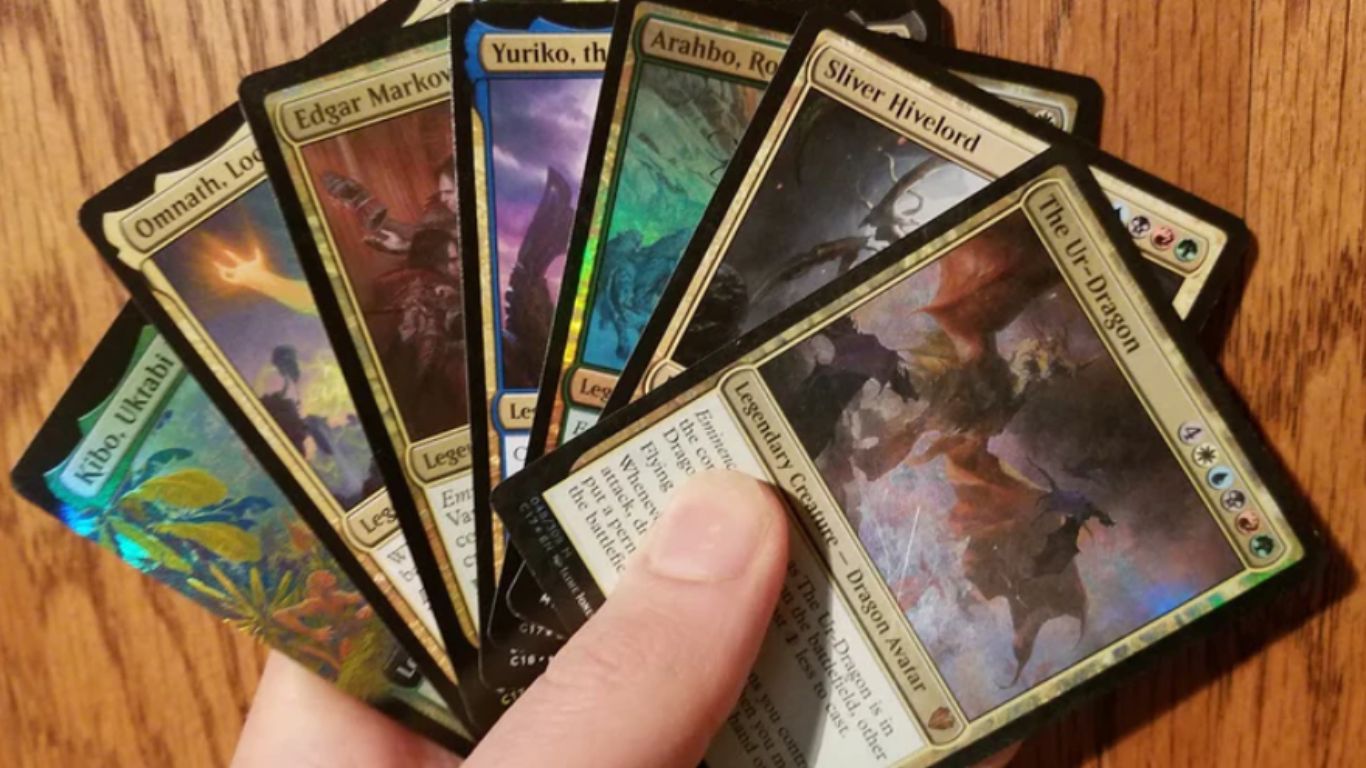Commander, also known as Elder Dragon Highlander (EDH), is a beloved format in Magic: the Gathering (MTG) known for its diverse strategies, wacky combos, and epic multiplayer battles. But with such freedom comes a challenge: building an effective deck. Here’s where Artificial Intelligence (AI) steps in, offering a helping hand with the ever-evolving world of Commander deckbuilding.
This blog will explore how to utilize ChatGPT to rank magic commander decks. We’ll delve into the process, its limitations, and how it can enhance your deck-building experience. Buckle up, Planeswalkers, as we explore the intersection of AI and the vibrant world of Commander!
What is ChatGPT?
ChatGPT is a large language model developed by OpenAI, capable of carrying on conversations and generating creative text formats. While it can’t directly play a game of Commander, it excels at analyzing vast amounts of data and identifying patterns. This makes it surprisingly useful for evaluating the strengths and weaknesses of your deck.
Getting Started: Ranking with ChatGPT
While ChatGPT doesn’t have a dedicated “deck ranking” feature, we can leverage its analytical prowess for our needs. Here’s what you’ll need:
- A ChatGPT Account: Signing up is free and straightforward.
- Your Decklists: Prepare a clear and concise list of your Commander decks, including the Commander itself and all 99 other cards.
- Deck Context: Consider providing additional information about your decks’ goals (aggro, combo, control) and desired power level (casual, competitive).
Now, let’s Dive Into the Process
- Initiate the Conversation: Start a chat with ChatGPT and explain your desire to rank your Commander decks.
- Feed the AI: Provide your decklists in a format ChatGPT can understand. You can either copy-paste the list directly or use a common deckbuilding format like MTG Goldfish or Moxfield.
- Context is Key: Briefly explain your decks’ objectives and power levels to guide ChatGPT’s analysis.
What to Expect from ChatGPT?
Once you’ve provided the information, ChatGPT will analyze your decks based on various factors. Here are some potential areas it might explore:
- Mana Curve: An efficient mana curve ensures smooth gameplay. ChatGPT can identify potential mana issues like clunky curves or lack of ramp in a high-cost deck.
- Synergy: Does your deck have a cohesive strategy? ChatGPT can analyze card interactions and identify potential weaknesses in synergy or lack of focus.
- Archetype Comparison: It might compare your deck to established Commander archetypes for that specific Commander or color combination, highlighting areas for improvement.
- Meta Analysis: Depending on your provided context, ChatGPT might consider the current Commander meta (popular strategies) and suggest adjustments to navigate the competitive landscape.
Limitations to Consider
While ChatGPT offers valuable insights, it’s crucial to understand its limitations:
- Limited Experience: ChatGPT is still under development and might not be familiar with every niche Commander strategy.
- Data Dependence: Its analysis relies heavily on existing data and might miss creative or unconventional deckbuilding choices.
- Subjectivity: Concepts like “fun” or “unique playstyle” are challenging to quantify. Ultimately, the final decision on your deck’s effectiveness rests with you.
Beyond Ranking: Using ChatGPT for Creative Deckbuilding
ChatGPT’s potential extends beyond ranking finished decks. Here are some ways to use it to spark creative deckbuilding ideas:
Unearthing Hidden Gems
Concept Catalyst: Feeling stuck on a theme or color combination? Describe your desired playstyle (aggressive, control, etc.) and let ChatGPT suggest unexpected Commanders that fit the bill. You might discover a diamond in the rough that perfectly aligns with your strategic vision.
Synergy Sleuth: Have a particular card or combo in mind? Feed it into ChatGPT and ask it to find lesser-known cards that synergize beautifully. This can lead to uncovering hidden gem cards that can elevate your deck’s potential and surprise your opponents.
Conquering the Meta Maze
Metamorphosis Master: Planning to tackle your local Commander scene? Briefly describe the dominant strategies (creature-heavy decks, heavy control, etc.) and ask ChatGPT for suggestions to optimize your deck against that specific meta. This can help you identify key cards to include or strategies to counter for a more dominant presence at the table.
Theming Beyond the Obvious
Themed Tome: Going for a specific tribal theme (vampires, zombies) or pop culture reference (Lord of the Rings, Rick and Morty)? Provide details about your theme, and let ChatGPT help you brainstorm unique cards that capture the essence without being the most obvious choices. This can lead to a flavorful and thematic deck that stands out from the crowd.
Breaking the Mold
Unconventional Architect: Want to build a deck that defies categorization? Describe some unconventional strategies you’re interested in (group hug, chaos) and see what quirky suggestions ChatGPT throws your way. You might end up with a hilarious group hug deck or a wonderfully chaotic deck that disrupts the game in unexpected ways.
Remember: Don’t blindly follow ChatGPT’s every suggestion. Use its insights as a springboard for further research, experimentation, and ultimately, building a deck that reflects your personal playstyle and preferences.
Conclusion
Getting ChatGPT to rank magic commander decks is a fascinating tool for Commander enthusiasts. While not a replacement for your own strategic thinking, it can provide valuable data-driven insights for deck analysis and creative spark generation. Embrace AI as a helpful companion on your Commander deckbuilding journey, and remember, the most fun lies in building and playing decks that showcase your unique perspective on the battlefield!

